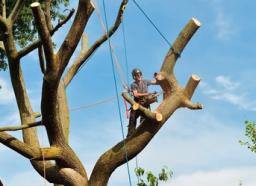Top tips for beginners in tree surgery

Top tips for beginners in tree surgery
The most typical tree surgery services include crown reduction and shaping. This is when a tree surgeon will selectively remove branches in order to reduce the height of the tree and change its upper shape.
In crown lifting and thinning, trees have some of their lower branches removed to prevent them obstructing the area below. This is especially useful if you have flowerbeds below your trees that need room to grow and access to air and sunlight.
In felling techniques, tree surgeons will completely remove an individual tree either by sectionally removing branches of the tree or by cutting it down at its base. Felling is sometimes necessary if a tree is rotting, dying, or if it is an obstruction.
Pollarding is similar to crown reduction and shaping in that it involves the removal of the upper branches to ensure a tree achieves the desired height.
Hedge and shrub trimming can be quite a creative process in that hedges and shrubs can be manually shaped to the desired design. Alternatively, trimming can simply be a way to tidy hedges and shrubs and promote healthy growth.
Dead wooding involves the removal of dead sections of a tree. Dead wood is important to remove as it can spread rot to the remainder of the healthy tree and poses a risk as a dead branch could fall at any moment without warning.
Finally, stump grinding is the action of removing the remains of unsightly tree stumps by taking them out from the tip of the roots to the end of the stump.

